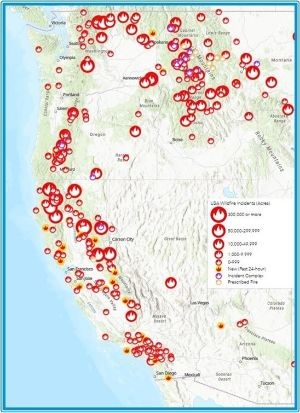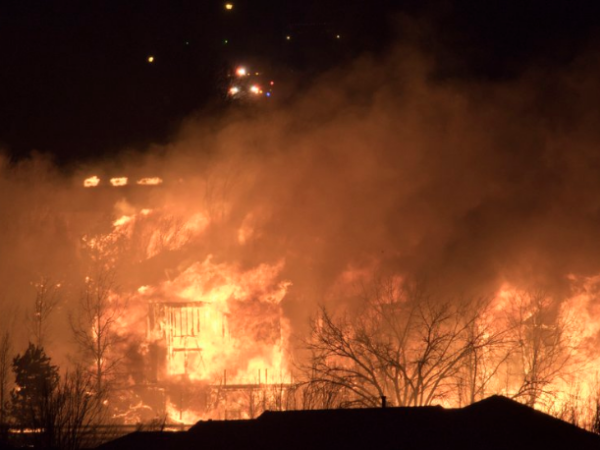
| The Pacific Gas and Electric utility company is to blame for the Dixie Fire, which ravaged swaths of Northern California last summer, after a tree fell on electrical distribution lines that it owns and operates, a state investigation found.
The California Department of Forestry and Fire Protection, known as Cal Fire, said in a statement Tuesday that its “meticulous and thorough investigation” determined the Dixie Fire was caused by a tree contacting PG&E distribution lines west of Cresta Dam. The report has been forwarded to the Butte County District Attorney’s Office, the agency added, which will determine whether criminal charges will be filed. The blaze was the second-largest in California’s history and burned nearly 1 million acres an area larger than New York City, Chicago, Dallas and Los Angeles combined. Cal Fire also urged Californians to “remain vigilant and be prepared for wildfire,” after a year that saw climate change turbocharge severe storms, floods and extreme weather across the United States. The Dixie Fire stripped forests and forced thousands from their homes after it began on July 13. It burned a total of 963,309 acres in Butte, Plumas, Lassen, Shasta and Tehama counties, according to Cal Fire, destroying 1,329 structures and damaging 95 others. It also caused one fatality, the agency said. Some past wildfires were deadlier, including the 2018 Camp Fire that leveled the town of Paradise, catching residents off guard and killing at least 85 people as it torched well over 18,000 structures. PG&E pleaded guilty to involuntary manslaughter in the Camp Fire and acknowledged that its electrical grid caused the blaze. The company did not immediately respond to a request for comment from The Washington Post, but it has previously indicated that its equipment may have started the Dixie Fire. “This tree was one of more than 8 million trees within strike distance to PG&E lines,” the utility said in a statement to the Associated Press on Tuesday. “Regardless of today’s finding, we will continue to be tenacious in our efforts to stop fire ignitions from our equipment and to ensure that everyone and everything is always safe.” The company also said in July that it planned to bury 10,000 miles of California power lines in an attempt to prevent its equipment from sparking wildfires, a project that would probably cost tens of billions of dollars and take well over a decade to complete. |
| 2022, The Washington Post |


